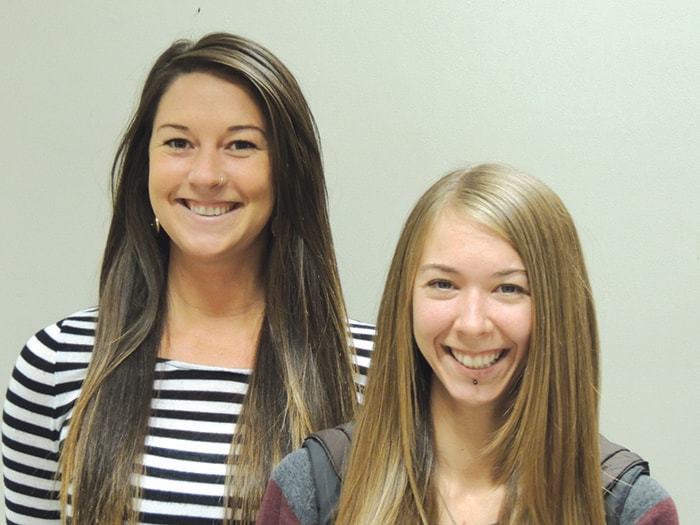Authors Celeste Brooke-Landon and Ashley Brassington are second-year college students in the RecreationFish and Wildlife program at Selkirk College.
Common cattails are not your average wetland plant. They are made up of an extensive fibrous root system, a hollow stalk with a fluffy seed head, and tall, stiff leaves that can grow up to 10 feet tall. The leaves of the cattails offer the perfect habitat for a variety of songbirds and waterfowl who use the dense cover for protection and nesting. Frogs and dragonflies typically lay their eggs on and around the leaves and some fish will utilize the underwater leaves for nesting and cover. Other than these obvious benefits to most riparian and wetland ecosystems, cattails can also play a vital role in the restoration and reclamation process of damaged ecosystems.
It has been recently discovered that cattails possess the ability to assist in water purification. Cattails are capable of pulling heavy metals, such as lead and arsenic, out of soils and water in a process called phytoremediation. "Phyto" — from the Greek word meaning plant and "remedium" — meaning to correct or remove evil.
This process begins in the root system. Contaminants such as arsenic and lead are drawn up through the cattails' expansive root system and into the plant. Metabolic processes convert the lead and arsenic into carbon dioxide and water. "The cattail actually thinks the arsenic is a nutrient," says Dr. Jerimiah D. Jackson of San Diego, CA, a civil and environmental engineer. He began cattail-arsenic trials in the hopes of successfully filtering arsenic and other pollutants out of drinking water for poor communities in eastern India and Bangledesh.
Wetland ecosystems are some of the most sensitive and important on the planet. They provide a variety of vital ecosystem functions and values. Recent efforts have been made in the West Kootenays to reclaim and remediate sensitive areas in an effort to offset the impacts of mineral exploration. A recent example of this is Teck's proposal to take action in the remediation of an old tailings pond near Fisherman's road in Taghum along Kootenay Lake. This is an area which now poses a threat to humans, fish and wildlife after testing positive for elevated levels of lead and arsenic. The tailings are old remnants of the Kenville mine, Kootenay Lake's oldest mine site that was in production from 1890-1956.
The site was bought out by Teck in 1931, and recent discussions were directed at the removal of the toxic pollutants which still remain in the substrate of the tailings area. The traditional process involves getting rid of contaminated soil and comes with a number of issues.
First there is the cost. At this site, digging up and transporting all the contaminated material could cost up to $30 million. In addition, there is the concern of the work causing a breach of the pre-existing dyke and spreading the contaminants. In the end, you still have to deal with contaminated soil.
The use of phytoremediation may be an excellent option for sites like this. Cattails and other wetland plants can be used to process the contaminants naturally. This would mean a less invasive procedure, less labour and use of heavy machinery, and an over-all cheaper process. Using wetland plants like cattails to extract contaminants and purify water would be a safe and effective way to not only reclaim, but to restore this wetland site to a somewhat natural state. The biggest issue then is time. The use of phytoremediation works but is a slow process. It takes time for the plants to pull up contaminants, molecule by molecule, and process them. Also, while the natural process is slowly happening, how do you isolate this space so that it doesn't affect other areas or other species who might be trying to use the space? Not easy questions to answer.
